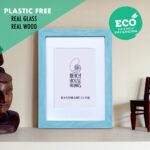I. Understanding Upcycled Products: Definition and Benefits
II. Examples of Popular Upcycled Products
III. The Environmental Impact of Upcycling
Understanding Upcycled Products: Definition and Benefits
Hey there! Have you ever heard of upcycling? If not, don’t worry—you’re in the right place! Upcycling is a fantastic way to breathe new life into old items, transforming them into something beautiful and functional that you can proudly use or wear. So, let’s dive into what upcycled products are and why they’re beneficial for both you and the planet!
What Is Upcycling?
At its core, upcycling involves taking waste materials or unwanted products and creatively reusing them to create something of greater value. Unlike recycling, which often breaks materials down to make new products, upcycling retains the original materials’ form and essence, making it a more creative and artistic process.
Why Choose Upcycled Products?
So, why should you consider upcycling when you shop or think about your consumption habits? Here are some compelling benefits:
- Environmental Benefits: Upcycling minimizes waste by giving a second life to items that would otherwise end up in landfills. This not only helps reduce pollution but also conserves natural resources.
- Unique and Customizable: Upcycled products are often one-of-a-kind. Because they are made from varied materials, you can find pieces that truly reflect your personality and style. Plus, many artisans allow you to customize items, adding that personal touch!
- Support Local Artisans: Many upcycled products are made by local artists and small businesses, meaning your purchase supports the local economy and encourages creativity.
- Cost-Effective: Upcycling can be a more affordable option than buying new. Often, these items are priced lower than their brand-new counterparts, allowing you to save money while still getting quality products.
- Promotes a Sustainable Mindset: By choosing upcycled products, you cultivate a more sustainable lifestyle. It encourages you to think about consumption patterns and how you can reduce waste in your daily life.
How to Get Started with Upcycling
If you’re feeling inspired to jump into the world of upcycling, there are many ways to get started! Here are a few ideas:
- Check out local thrift stores or garage sales for items that can be transformed.
- Explore online marketplaces, where many artisans sell their beautiful upcycled creations.
- Try your hand at DIY projects! There are numerous tutorials available online to guide you through the upcycling process.
In conclusion, upcycled products offer a delightful blend of creativity, sustainability, and uniqueness. By choosing upcycled items, you’re not only making a stylish choice but also contributing positively to the environment. So next time you’re looking for something new, consider going the upcycled route. You might just find your new favorite piece!
Examples of Popular Upcycled Products
Hey there! Have you ever thought about how creative and resourceful upcycling can be? It’s like giving a second chance to items that might have otherwise ended up in a landfill. Let’s dive into some popular upcycled products that not only add charm and character to your life but also help the planet!
1. Furniture
One of the most remarkable areas where upcycling shines is in furniture. Old wooden pallets can be transformed into stunning coffee tables or outdoor seating. Imagine having a rustic pallet bench in your garden — it’s both stylish and sustainable!
- Chairs: Old chairs can be reupholstered and painted to fit your decor.
- Dressers: A fresh coat of paint and new hardware can turn a tired dresser into a showpiece.
2. Fashion
Fashion lovers, rejoice! Upcycling in the fashion industry is booming. Designers are taking old clothes and fabric scraps to create unique, one-of-a-kind pieces.
- Denim: Those old jeans can be turned into stylish bags or even trendy patches for new garments.
- Vintage Fabrics: Scarves and dresses made from vintage linens or curtains tell a story that’s all their own!
3. Home Decor
Let’s talk about home decor. Who needs mass-produced items when you can have homemade treasures? Upcycled decor items bring personality and warmth to any space.
- Glass Jars: Mason jars can become charming storage solutions or candle holders.
- Old Books: Stack them to create a unique side table or use the pages in art projects!
4. Kitchenware
The kitchen is another perfect place for upcycling. Instead of tossing out items you no longer use, think about how they can find a new purpose!
- Cork Boards: Old wine corks can be glued together to create a fun and functional bulletin board.
- Cutting Boards: Repurpose an old wooden cutting board into a serving tray with a little sanding and staining.
5. Art and Crafts
Last but not least, let’s not forget about art! Upcycling is a fantastic way to express creativity. Artists use discarded materials to create stunning pieces that make a statement.
- Collages: Old magazines and newspapers can be cut and arranged into beautiful art pieces.
- Sculptures: Found objects, like bottle caps and scrap metal, can be transformed into unique sculptures.
So, there you have it! From furniture to fashion, upcycled products are not only eco-friendly but also a fantastic way to add a personal touch to your life and home. Next time you’re about to throw something away, take a moment to think about how it could be upcycled instead. Happy upcycling!
The Environmental Impact of Upcycling
Have you ever thought about how your everyday choices can influence the planet? One of the most exciting trends in sustainable living is upcycling! It’s not just a creative hobby; it’s a powerful way to reduce waste and make a positive impact on our environment. Let’s dive into how upcycling benefits our planet and why you might want to start embracing this idea in your daily life.
1. Reducing Waste
Every year, millions of tons of waste end up in landfills. The beauty of upcycling is that it gives a second life to materials that would otherwise be discarded. By turning trash into treasure, we can significantly reduce the amount of waste produced. Here’s how it works:
- Upcycling takes materials that already exist, which means fewer resources are used to create new products.
- It encourages creativity, helping people see potential in items that might seem useless.
2. Conserving Resources
Upcycling isn’t just about reducing waste; it also plays a crucial role in conserving natural resources. Each time we upcycle, we minimize the demand for raw materials, which often leads to:
- Less energy consumption: Creating new products from scratch often requires a significant amount of energy, but upcycling often requires much less.
- Decreased pollution: Manufacturing new items can lead to air and water pollution. By reusing materials, we help keep our planet cleaner.
3. Lowering Carbon Footprint
Did you know that the production process of new goods contributes to greenhouse gas emissions? Upcycling helps mitigate this issue. When we choose to upcycle, we’re effectively reducing our carbon footprint in several ways:
- Fewer emissions from manufacturing: By reusing materials, we bypass the energy-intensive processes involved in creating new products.
- Transportation savings: Upcycled products often require less transportation, which further reduces emissions linked to shipping and distribution.
4. Inspiring Sustainable Practices
Upcycling isn’t just a trend; it’s a movement that encourages a broader conversation about sustainability. When we showcase upcycled creations, we inspire others to rethink their consumption habits and consider:
- How they can reuse or repurpose items at home.
- Supporting local artisans who specialize in upcycled goods.
5. Strengthening Communities
Finally, upcycling can have a community-building effect. Workshops and events centered around upcycling often bring people together, fostering collaboration and creativity. Plus, by supporting local upcyclers, we contribute to our local economies and promote a sense of community stewardship towards our environment.
In conclusion, upcycling is so much more than a trendy buzzword; it’s a lifestyle choice that can lead to meaningful environmental benefits. By reducing waste, conserving resources, lowering our carbon footprints, inspiring sustainable habits, and strengthening our communities, we can all play a part in making the world a better place—one upcycled item at a time. So, why not start today? Look around your home, and see what treasures you can upcycle!










Comments